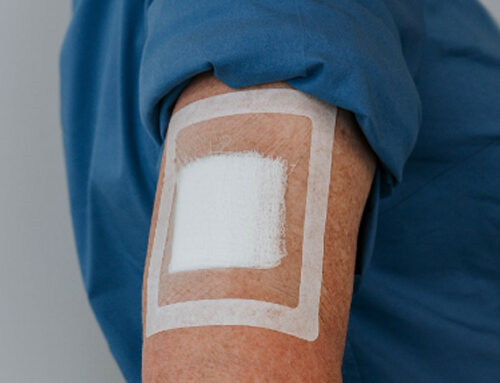When a wound loses moisture, the surrounding tissue drops in temperature which counteracts the healing process. To foster insulation during the recovery period, clinicians need a medical aid that adheres to skin without further irritating the injury. Foam dressings — or semipermeable polyurethane — are a non-adherent or adherent dressing that helps retain heat to bolster healing and infection prevention.
The benefits of a foam dressing
As WoundSource explains, foam dressings are especially effective at alleviating the discomfort and pain associated with weeping wounds or dressing-related damage. Let’s get into the specific benefits of using a foam dressing as presented in this Wound Care Education Institute article:
- Doesn’t stick to the wound and can be applied and removed easily
- Offers cushioning and can be used with infected injuries
- Serves as a bacterial barrier and helps prevent hyper-granulation
- Flexible enough to adhere to body parts like toes, fingers or ears
- Perfect for bony protrusions and areas of the skin that are more likely to be agitated
When should a foam dressing be used?
As indicated in the WoundSource article above, foam dressings are especially effective for partial- and full-thickness exuding wounds, including:
- Leg ulcers
- Skin grafts
- Minor burns
- Abrasions
- Lacerations
- Injuries in need of negative pressure therapy
Because foam dressings offer both cushioning and flexibility, they can be used under compression wraps and cut to accommodate tubing for procedures like tracheostomy and gastrostomy. To make the most of foam dressing, follow these application best practices:
- Apply gloves and clean the wound with saline solution thoroughly
- Using sterile gauze, dry the skin surrounding the wound
- The foam dressing should extend no less than one inch from the injury’s edges
- If you’re using a non-adhesive dressing, a secondary dressing is required to secure it in place
An academic review in the journal Biomedicine has noted that foam dressings are ideal for wounds that have moderate-to-heavy exudate, due to their absorbency and ease of use.
What makes our foam dressings unique?
While foam dressings have been shown to be better at promoting wound healing, they may still have the associated problem of skin tears and pain when removed. Comfort Release® now has a brand new foam dressing that, “sticks when you need it and releases when you don’t”. Due to its smart, switchable de-bonding adhesive technology, the dressing adheres to the skin securely when needed, and can be quickly and painlessly released. Just like you turn a light switch off, at removal you turn the adhesive off with a small swipe of common rubbing alcohol around the border. This way there is no pain, no trauma, and no skin tears.
Our products are developed by doctors, recommended by clinicians and caregivers, and loved by patients. To learn more about protection of fragile skin and an optimum healing environment, contact us here or request a sample and try for yourself!


